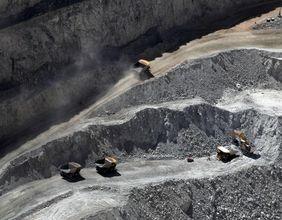Highlights
- RAS Technology Holdings' stock jumped 22% recently.
- ROE analysis shows company's profit capabilities are limited.
- Industry comparison reveals declining performance.
Recently, RAS Technology Holdings, traded as (ASX:RTH), experienced a substantial 22% increase in its stock value within a week. While such a surge naturally grabs attention, delving into the company's core financials may offer a more comprehensive picture of its health and future potential.
Understanding RAS Technology's Return on Equity
A key metric for evaluating a company's profitability is the Return on Equity (ROE), which assesses how effectively a company uses its equity base to generate profits. For RAS Technology Holdings, the ROE stands at a modest 2.8%. The calculation, based on a net profit of AU$400k against shareholders’ equity of AU$14m (as of December 2024), suggests that for every A$1 invested by shareholders, the company earns A$0.03 in return.
The Significance of ROE for Profit Growth
ROE highlights a company's capability to convert its profits into growth. A high ROE typically indicates potential robust earnings growth. However, for RAS Technology Holdings, a 2.8% ROE trails the industry average of 12%, likely contributing to a five-year net income decline of 6.6%. Additional factors, such as inefficient capital allocation or a high payout ratio, might also be influencing this downturn.
Industry Performance Comparison
Examining the broader industry context reveals that while RAS Technology has faced declining earnings, competitors have achieved a 4.9% growth rate over the same timeframe. This disparity could signal underlying challenges within RAS Technology itself.
Earnings Growth and Market Valuation
For potential investors, evaluating stock based on earnings projections is crucial. The Price-to-Earnings (P/E) ratio provides insights into how the market values a company's earnings potential relative to its peers. Exploring whether RAS Technology carries a higher or lower P/E ratio compared to its sector could offer valuable insights.
Profit Utilization and Growth Factors
Notable is the fact that RAS Technology Holdings reinvests its earnings, as evidenced by the lack of regular dividend payouts. Despite this reinvestment, current earnings decline hints at possible internal or market-driven hindrances affecting growth. Analyst forecasts suggest potential shifts, predicting significant improvements moving forward. To understand these expectations, reviewing a report on future growth forecasts for RAS Technology Holdings could be insightful.
Overall, while the stock's recent performance is noteworthy, RAS Technology Holdings exhibits financial characteristics that require careful consideration. As the company retains most of its profits with limited earnings growth, assessing further information could clarify projections for the company's trajectory.






